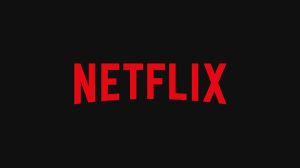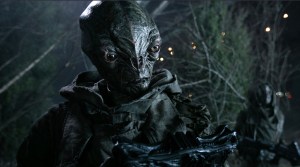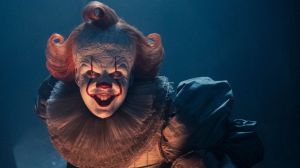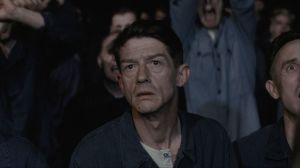When The CW’s Crisis on Infinite Earths aired in 2019 and 2020, ComicBook.com wrote that it was the kind of event Marvel couldn’t do. In the years since, Marvel got kinda close, bringing together all three live-action Spider-Man actors in Spider-Man: No Way Home, but when it tried to expand beyond one character, things like Doctor Strange in the Multiverse of Madness and What If…? felt more like gimmicks than real stories. Doctor Strange in particular proved that even if you have a number of high-profile cameos, they won’t mean anything if the audience has not built up any real relationship to the characters. Nowhere has this ever been more proven than in The Flash, which really illustrated the importance of world-building, and the fundamental lack of understanding that Warner Bros. film execs seem to have on what DC is and what makes it appealing.
Videos by ComicBook.com
So, yeah. Spoilers ahead for The Flash. And apologies if you loved the movie; we actually liked it, too, but it’s hard to argue that it wasn’t flawed in some really specific ways that The CW’s “Arrowverse” can help us examine a little.
While Marvel Studios started with a handful of solo movies, building up enthusiasm for the characters before beginning to team them up, Warner Bros. was impatient. Seeing the massive commercial success of Marvel’s The Avengers, a Justice League movie became something management was desperate to push out the door, and suddenly Zack Snyder’s Batman v Superman: Dawn of Justice wasn’t just a newly-introduced Batman (Ben Affleck) fighting the Superman (Henry Cavill) from Man of Steel, but it was also used to introduce The Flash (Ezra Miller), Cyborg (Ray Fisher), Wonder Woman (Gal Gadot), and Aquaman (Jason Momoa). To top it all off, Superman died, creating a pretense for Bruce Wayne to bring this group of loosely-acquainted people together into a team to fill the gap. That’s…a lot of story. When Warners wanted a shorter cut to squeeze in more screenings on opening weekend, the narrative started to feel threadbare and the pacing seemed manic. Snyder’s “Ultimate Cut” was a huge improvement, but by the time it came out, many fans had already seemingly turned on Snyder…and DC.
So while Marvel did not have the decades of history and alternate takes to lean on — their theatrical features were relatively limited by the time the MCU launched, and by 2019, not all of those characters were owned free and clear by Marvel — DC had a different problem. They only had history. Yeah, everyone loved Michael Keaton’s Batman and Christopher Reeve’s Superman…but the “DC Extended Universe” had overextended itself too fast, leaving audiences feeling burned. Casual viewers likely would have struggled to tell you very much about The Flash or Cyborg, and Aquaman’s solo movie was a huge hit, but it seemed to cruise largely on the strength of Momoa’s charm.
Meanwhile, on TV, producers Greg Berlanti and Marc Guggenheim had spent nearly a decade cultivating an elaborate shared universe with dozens of hours of stories and instantly recognizable character dynamics. Ask an audience member what the DCEU’s Flash would do if confronted with a challenge, and they would have no idea. Ask about Grant Gustin’s Flash? They can probably reason out a pretty good facsimile of an episode of The Flash. The Arrowverse was like the Marvel Cinematic Universe, with a tenth of the budget and three times the runtime.
That’s why, when it came time to see Earth-38’s Supergirl interacting with Brandon Routh’s Superman (himself a version of Christopher Reeve’s Man of Steel), it had weight and emotion behind it. And it’s why The Flash — this weekend’s cameo-stuffed multiverse movie — felt so shallow by comparison.
As a refresher, Crisis On Infinite Earths was a five-part TV event that ran through episodes of Batwoman, Supergirl, The Flash, Arrow, and DC’s Legends of Tomorrow (plus a kind of unofficial tie-in episode of Black Lightning). LaMonica Garrett, introduced as The Monitor in the previous year’s “Elseworlds” crossover, returned. The Monitor is a nearly omniscient cosmic being, and he came around during “Elseworlds” with bad news: a Crisis was coming that he himself was unable to stop. He recruited the heroes of the “Arrowverse” to help him take on the Anti-Monitor (also played by Garrett), essentially The Monitor’s evil twin, but on a cosmic, genocidal scale.
The story in the comics was used to get rid of DC’s multiverse, which writer Marv Wolfman (side note: he co-wrote the Arrow episode of the crossover) believed was being misused at the time and dragging down stories. The infinite universes of DC’s multiverse were combined into a single timeline with a shared history, including the first incorporation of characters like Captain Marvel (Shazam!) and the Charlton Comics characters (Blue Beetle, Captain Atom, etc.) – properties DC had bought from other publishers and had previously kept in their own universes. The TV version operated somewhat similarly, bringing the three primary Earths of the Arrowverse — Earth-1, the home of Arrow, The Flash, and Legends of Tomorrow) together with Supergirl‘s Earth-38, and Black Lightning‘s Earth, which never got an in-story multiverse distinction.
But the multiverse had been a storytelling tool in the Arrowverse for five years at this point, and audiences had paid visits to several other worlds. Earth-2, the first world annihilated by the Anti-Monitor, wasn’t just an abstract ball of light in the Speed Force. Characters that audiences knew and cared about lived there, and died in Crisis. Earth-X, which had previously invaded Earth-1 in a fan-favorite crossover event, also made an appearance. And when it came time for cameos, most of them meant something. Yes, there were some token “red sky” cameos — a name given to comic books that tied into Crisis on Infinite Earths only by having a red sky on one or more pages, acknowledging the ongoing crossover in the background without engaging. Those included appearances by the Earths from Titans, Swamp Thing, Doom Patrol, Birds of Prey, and the 1966 and 1989 versions of Batman, complete with cameo appearances relevant to those worlds. But there were also cameos that had more weight, and that contributed something meaningful to the story.
A disclaimer: Yes, both Sasha Calle’s Supergirl and Michael Keaton’s Batman have been praised as high points of The Flash, and we aren’t going to pretend they didn’t bring value to the table. Hear us out.
Keaton’s Batman is an effective addition, from a storytelling as well as emotional perspective. He also nicely embodies the paternal role that Affleck’s Bruce played for Flash and Cyborg in the same way the Flashpoint Batman — Bruce’s literal father, and a character a generation older than Barry — did in the Flashpoint comic book series. And, yeah, it’s super cool to see all those great designs from the Burton Batman films used again. No notes.
In that way, Keaton’s Batman feels a lot like the Spider-Men from No Way Home, bringing a depth to the multiverse and a shared, understood history that would be difficult to pass along through dialogue in a single film. Little winks and nods from his character could evoke a visceral reaction that you would have to fight for from somebody else doing the same job.
Calle’s Supergirl is a little more complicated. She was great, but it feels like a weird way and place to introduce the character. It diminishes Kara a little bit to just be the character who couldn’t live up to Clark, and it does feel like her role could have been played by Cyborg, who was originally rumored to be Barry’s bestie in early drafts.
Where The Flash really kind of falls down, compared to other multiverse movies, is with its big multiverse scene. We get static, uncanny valley-like cameos by beloved characters from the past, but…they don’t do anything. There’s no value to having them here. The whole scene exploring the multiverse has about as much relevance, and about as many Easter eggs, as the newspapers on Wallace Keefe’s wall in Batman v Superman. Yeah, it’s cool to see Superman trashing a car like on the cover of Action Comics #1, but…it doesn’t really mean anything, does it? One could easily argue that Snyder actually did it better, because at least he was subtle about it, and rewarded close viewing of the movie.
Leaving aside the actual ethics of reviving Adam West and Christopher Reeve from the dead to have their CGI likenesses cameo in this film — we are assuming their estates approved, and given the love those actors had for the roles, it’s entirely possible they themselves might have done so — their appearances feel like an unnecessary distraction. Even the “red sky” crossovers saw worlds that were being obliterated by the Anti-Monitor. Seeing Alexander Knox (Robert Wuhl) and Dick Grayson (Burt Ward) responding to the threat moved the narrative along in some small way, while also paying homage to the projects those actors had been in.
Lucifer Morningstar actually provided an entertaining (if ultimately kind of pointless) side quest for Team Arrow to pursue. Tom Welling and Erica Durance gave a meaningful (if controversial) update on the lives of their characters from Smallville. They weren’t just there to be there. They were there instead of some other extra who would have served a similar purpose. They were treats for longtime viewers, and felt like they had some kind of reason for being. The closest The Flash had to this feeling was when Nic Cage showed up as Superman, delivering on something fans have wanted to see realized onscreen for years.
For the most part, the cameos in The Flash seem to exist only for the purpose of having cameos. There’s nothing inherently wrong with that fun little bit of fanservice. But it seems like in a movie that’s all about the multiverse, this motherlode of cameos by fan-favorite characters could have been put to some kind of use. And the fact that there simply didn’t seem to be any characters beyond Batman with whom Barry had any kind of meaningful relationship is…well, it’s telling.
You can even go one level deeper. Into the realm of Keaton/Spider-Men-style cameos, where certain characters have a profound impact on the plot, you get the Batman of Earth-99 (Kevin Conroy), the Superman of Earth-96 (Brandon Routh), The Flash of Earth-90 (John Wesley Shipp), and Black Lightning. All of these characters, from Earths that weren’t part of the principal Crisis universe, showed up and played important parts in the story, which were motivated by existing tales from comics, TV, and animation. And since Routh’s Superman Returns is officially a sequel to Superman: The Movie and Superman II, it’s a strange case of the same character (Reeve’s Superman) being used significantly better in Crisis on Infinite Earths than he was in The Flash. Granted, they couldn’t have used Reeve in the same way The CW used Routh…but they could easily have used Routh, and then still had Reeve appear somewhere in the multiverse.
Last, and most bafflingly: Grant Gustin played The Flash on TV for almost a decade, and became the face associated with the character for a whole generation of fans. On his show, John Wesley Shipp — who previously played the character in a short-lived 1990 TV series — appeared as a multiversal doppelganger of The Flash, paying tribute to the character’s legacy in a way that honored Shipp, and his show, and its fans. When Crisis on Infinite Earths came around, they even managed to bring in Ezra Miller, who shared the screen with Gustin and established that Miller’s Barry had the capacity for multiversal travel.
Filmmaker Andy Muschietti has explained that with so many potential cameo appearances to choose from, some had to go. He couldn’t do everything in the space of a single feature film, so he had to make some hard choices. We’re going to go out on a limb here and say that he made some seriously questionable choices. A cameo by Henry Cavill would have been very appreciated, especially given that so much of the movie’s plot centered on the events of Man of Steel. And it’s totally baffling that neither Gustin nor Shipp managed to snag a cameo. Hell, there was even a glimpse of Jay Garrick — a character Shipp has been playing in mutliple shows for years now — in the film, and they couldn’t take the easy “W” of using the world’s first live-action Flash to fill the part.
It’s easy to pounce on the cameos — and we have! — but it’s bigger than that. The Flash illustrates the way that Warner Bros. fundamentally mishandled the DCEU, refusing to allow it to be built up into a coherent shared universe, but still desperately wanted to ape Marvel’s success — first as a shared universe, then as a multiverse — in ways that were completely unearned. It isn’t just the cameos that Crisis on Infinite Earths did better; it’s the relationships, which is what movies have to be based on.
Speaking about the phenomenon of “superhero fatigue,” DC co-CEO James Gunn has repeatedly said that the trick to staving off superhero fatigue is to write superhero movies that are about characters. If it’s just another hole in the sky, with another dude in tights running around throwing lightning at it, that’s pretty easy to tune out. These things work the best when they allow the audience to feel like they are intimately tied to the characters, whether it’s Andrew Garfield’s Spider-Man opening up about his heartbreak and desperation, or Brandon Routh’s Superman explaining that no matter how much he loses, he knows that “hope is the light that leads us out of darkness,” there is nothing to say superhero stories can’t center on humanity and heart. Most of the good ones do.
Gunn himself may be key to building that for the DC Universe going forward, as he is one of the key architects of DC’s next generation of movies. If the Arrowverse, which used Arrow co-creator Marc Guggenheim as the “showrunner” for all its big events, is any indication, having someone with a firm grip on storytelling and a singular vision is certainly something that helps.








